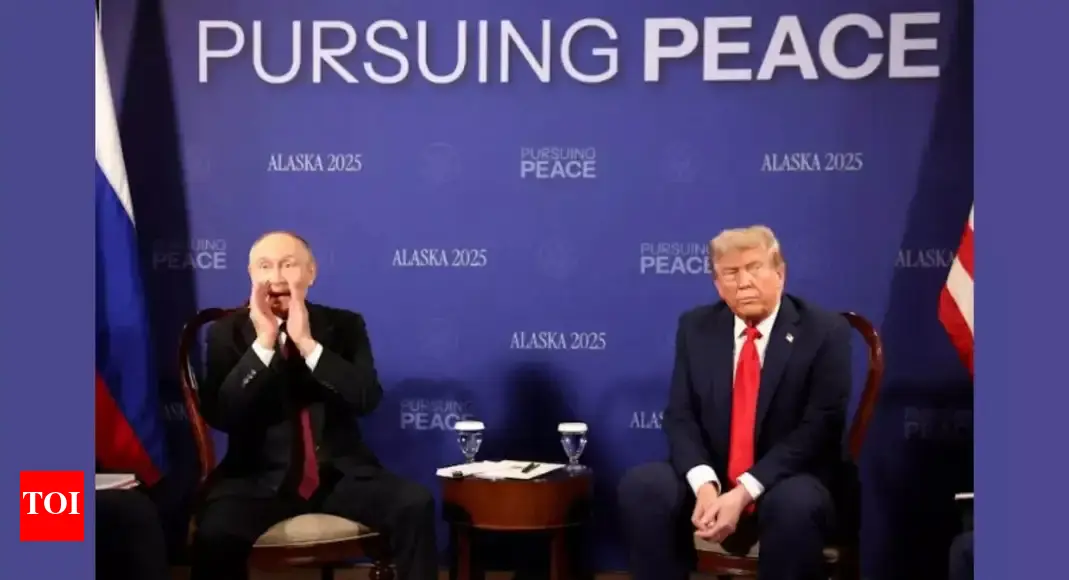The Trump tariffs are set to arrive “immediately.” President Donald Trump has been repeatedly calling April 2 “Liberation Day,” promising major tariff announcements. However, there are still numerous unresolved issues surrounding this. Let’s break down the key points.

Trump has already increased duties on goods from Canada, Mexico, China, as well as steel and aluminum imports. On April 3, the auto industry will also face a similar fate, with a 25% tariff to be added on top of existing duties on imported finished vehicles.
However, the level of uncertainty can only be known once the President reveals his detailed plan for the wider set of tariffs.
It will all be out in the open once Trump holds his ‘Make America Wealthy Again’ press conference in the Rose Garden at the White House on 4 pm (20:00 GMT) on Wednesday.
How big can the tariffs be?
One of the major talking points from Donald Trump‘s visions has been his intention to roll out universal tariffs on all US imports – ‘on all countries’.
Trump had entrusted his economics team with the task of coming up with plans for reciprocal tariffs on every country that taxes US imports, as well as to counteract on non-tariff barriers like vehicle safety rules that exclude American autos, and value added tax (VAT) that increase US cost.
Trump advisors have pitched the imposition of a 20 per cent global tariff on all US trading partners, the Wall Street Journal reported. However, the White House suggested Monday they might be “country specific”.
The US President had earlier said that the tariffs would be less than what other countries would be charging the US, adding that “we sort of have a world obligation perhaps”. While speaking in the Oval office, he said, “We’re going to be very nice, relatively speaking, we are going to be very kind,” he was cited as saying by an AFP report.
Which countries could take the hit?
Critics have reportedly warned that Trump’s strategy risks the potential of a global trade war, prompting a chain reaction from the US major trading partners like the European Union, Canada and China.
Trump had on Sunday said the tariffs could be imposed on “all countries”, hinting at the possible comeback of the ‘across-the-board’ tariff he had backed during his presidential election campaigns.
He had backed a 10 per cent across-the-board tariff on all imports entering the US, and sometimes even suggested a 20 per cent, even 60 per cent on imports from China, a BBC report mentioned.
Last month, US Treasury Secretary Scott Bessent had said that efforts were focused on the ‘Dirty 15’- the 15 per cent of countries that account for a bulk of trade with the US, imposing tariffs or other rules that put American companies at a disadvantage.
The Office of US Trade Representative identified countries it was “particularly interested” in ahead of craft recommendations. Anyways, these nations include Argentina, Australia, Brazil, Canada, China, the European Union, India, Indonesia, Japan, Korea, Malaysia, Mexico, Russia, Saudi Arabia, South Africa, Switzerland, Taiwan, Thailand, Turkey, the UK and Vietnam.
Mexico and Canada, ranked as America’s largest two trade partners, have also been riddled with the pressure of tariffs. The 25 per cent tariffs that were imposed on imports from Mexico and Canada came into effect on March 4.
However, Canada hit back with 25 per cent tariffs on C$30 billion ($20.7 billion) worth of America’s intentions.
US Commerce Secretary Howard Lutnick said that US officials might still try to work out a partial resolution with the two neighbours, adding that efforts were needed more than fentanyl front, a Reuters report said.
China has its fair share of tariffs, first a 10 per cent levy imposed on Chinese imports to the US on February 4, then came another 10 per cent of Chinese goods on March 4.
Even though China hit back by announcing additional tariffs of 10 per cent to 15 per cent on certain US imports from March 10. Beijing has also asserted that it would take all necessary measures to protect its rights and interests.
The European Union (EU) and the UK have been concerned about chances of sectoral tariffs, as well as the permanent levies that he might impose to counter VAT rates of Europe.
The US president earlier said that EU and other countries have troubling trade surpluses with the US. He had noted that the countries’ products will either face tariffs or Washington will demand that they buy more oil and has from the country.
In a statement on February 14, the European Commission had termed the ‘reciprocal’ trade policy as a step in the wrong direction.
The UK government is also bracing itself for the Trump tariffs, even though the two countries’ governments are continuing their talks on a potential carve out.
Chancellor of the Exchequer Rachel Reeves told her cabinet colleagues that securing an economic deal will provide some breathing space. The UK prime minister Keir Starmer on Tuesday said that they did not a tit-for-tat war but was a “knee jerk” reaction.
How will the tariffs impact?
White House spokeswoman Karoline Leavitt on Tuesday announced that import duties on US goods would take effect “immediately”. She noted, “The president has a brilliant team of advisors who have been studying these issues for a decades, and we are focused on restoring the golden age of America.”
American businesses and financial markets are unlikely to be freed from the uncertainty that comes with Trump’s often stop-and-go trade policy. That being said, companies will have a greater sense of how many countries will take the hit and how high the duties will be, once Trump makes the announcements.
Questions around trade and tariffs will, however, continue to loom, economists have said as per a report from The Associated Press.
Kelly Ann Shaw, a former senior White House trade adviser during Trump’s first term, said, “April 2 is when this all kicks off, it’s not when all of this ends.”
“At some point this will settle. But because we’re at the very beginning of what will fundamentally be a total rethink of the global trading system, there are going to be a lot more questions than answers in the near term,” she added.
The dynamics attached to the tariffs also pose a risk of economic recession both in the US as well as far out of its borders.
The US president, as per BBC, has said that the companies looking to avoid tariffs can simply conduct their business in the US. But, this is not an immediate or an easy fix, given the cost of setting up and hiring new employees.
Nicholas Bloom, a Stanford University economist and two colleagues, said that April could reduce the uncertainty if this is a one and final announcement on tariffs. “But, I suspect it will be one of a series on ongoing announcements,” he added.
Matthew Luzzetti, an economist at Deutsche Bank, noted that even if Wednesday’s announcements were to be the final words on tariffs, the uncertainty around the US president’s actions could drag down growth by about 1 per cent for several quarters. “If that uncertainty were to extend further, or remain elevated for longer, that would only amplify the effects,” Luzzetti said.
But even with more certainty, adding tariffs will harm the economy, said Neil Bradley, chief policy officer at the US Chamber of Commerce. “To the extent that April 2 provides clarity, then you can begin to make adjustments and plans. But having certainty about economically harmful policies is not a positive,” Bradley said.
(With inputs from agencies)



